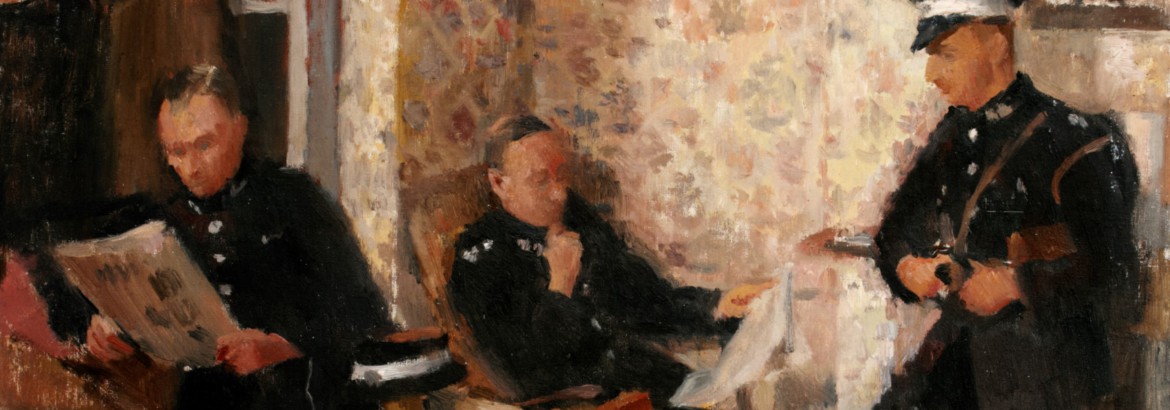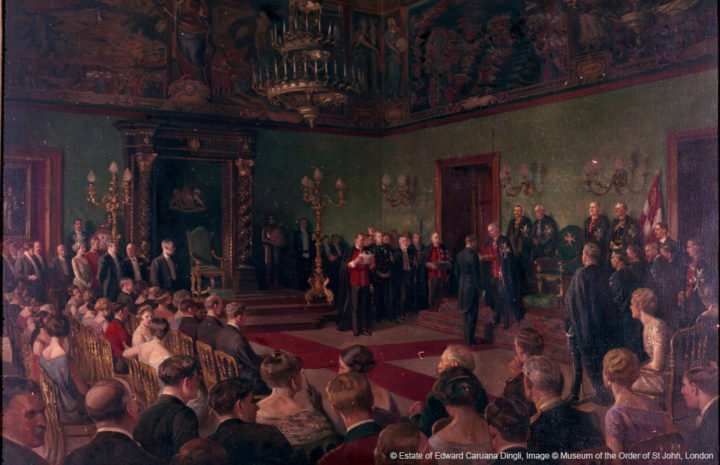This painting, by Maltese artist Edward Caruana Dingli (1876 – 1950), depicts a special Investiture in the Grand Master’s Palace in Valletta, showing the moment when the Governor of Malta was invested as a Knight by the Sub-Prior of the Order, the Earl of Scarborough.
This Investiture marked the end of the 1926 Pilgrimage, an Order event that was documented by the Librarian of the time, Colonel E.J. King, in his book The Pilgrimage of 1926. The Order of St John organised a pilgrimage to the historical buildings, sites, and homes of the Hopsitallers in Jerusalem, Cyprus, Rhodes and Malta. Known as the ‘Crusade of the White Cross’, over a hundred officials and members of the Order took place in the Pilgrimage. The Pilgrimage of 1926 finished in the capital city of Valletta in Malta, named after Grand Master Jean de la Valette. You can find out more about the 1926 Pilgrimage in our blog, A Pilgrim Badge.
The pilgrimage was arranged to celebrate the Order’s new Royal Charter of King George V, and subsequently a special Investiture was arranged in Malta. The Investiture took place in the stately Throne Room of the Grand Master’s Palace. The Investiture welcomed new members to the Order, including the Governor of Malta. Edward Caruana Dingle depicted this scene in his painting, that can now be seen in the Priory Church of the Order of St John. Dingli was also given the title Honorary Knight of Grace by the Order for the number of works he painted for St John’s Gate in Clerkenwell.
Lieutenant-Colonel F.A. Brooks, one of the members of the Order who took part in the Pilgrimage, had his portrait painted in the same year by Dingli. Lieutenant-Colonel Brooks can be seen in this painting with his back to the viewer. Other well-known members of the Order from this period can also be identified with the use of a key, displayed on the frame of the painting.




